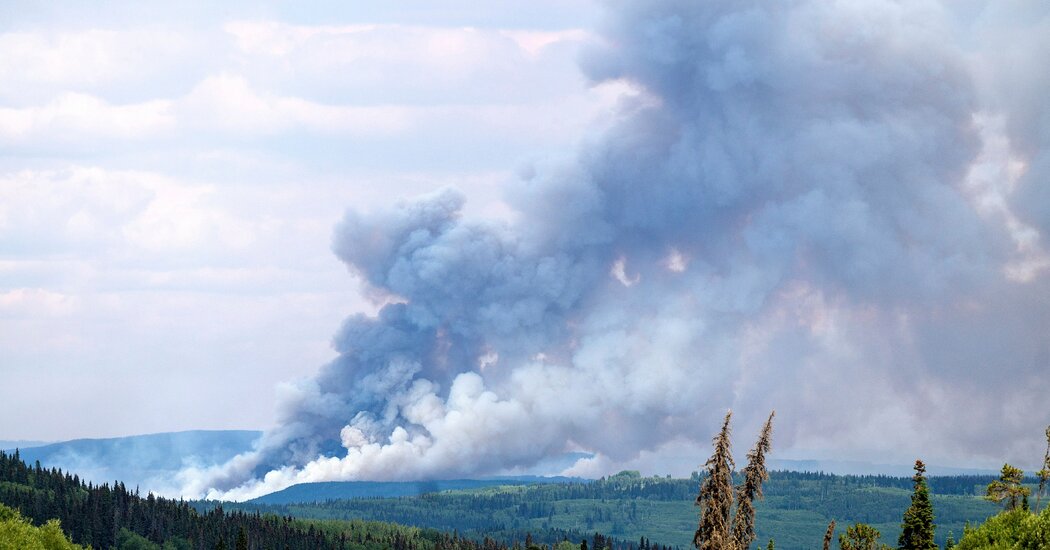Fishing trips to Canada are a tradition for Jeffrey Hardy and his three friends from Vermont. They have, since 2001, been anglers loyal to Quebec’s northern wilderness, where the walleye are plentiful and the cellphone service is not.
This summer, the crisp forest air coveted by recreationists visiting Canada was instead polluted with smoke as wildfires have torn through millions of acres, blocking roads, destroying campgrounds and forcing tourism operators to scramble during peak season. The men’s mid-June fishing trip was canceled.
“It was a big letdown,” said Mr. Hardy, who is from St. Albans, Vt., but has been living and working remotely from Bermuda since the pandemic began. “Everybody was excited to go because Canada had been shut down for all of Covid.”
The country’s worst wildfire season on record is straining the outdoor segments of Canada’s tourism industry at a crucial time in its rebound from years of pandemic travel restrictions. Of the 28.6 million acres that have burned across the country so far, more than 11.6 million acres were in Quebec, the most of any province, according to data from the Canadian Interagency Forest Fire Centre.
Fire season typically runs from April to September in Canada, and had an intense start this year with mass evacuations in Alberta and Nova Scotia in May, followed by Quebec, and parts of northern Ontario. In central British Columbia, where the wildfires are picking up intensity, the coroner’s office is investigating the death of a 9-year-old from an asthma attack that it said was “aggravated by wildfire smoke.” Three firefighters have died in separate provinces.
Other than some days of reduced air quality, major Canadian cities remain largely unaffected by wildfires. The fires are in the country’s northern and more remote regions — regions that, in years past, have drawn travelers who are interested in outdoor experiences.
Federal data compiled by the Tourism Industry Association Canada shows that tourism represented, in 2019, a two percent share of Canada’s gross domestic product, or 44 billion Canadian dollars. Because of rigid international border restrictions, that figure was halved by the pandemic, but has since rebounded to 37.8 billion dollars.
Last year, close to 9.5 million Americans traveled to Canada, and another 3.3 million came mainly from Britain, Mexico, India, France and China. American travelers are the most important demographic for Canada’s tourism industry, with…
Click Here to Read the Full Original Article at NYT > Travel…
